Starting a garden can be overwhelming for beginners, but there are easy and manageable steps to get started. You don’t need to have a green thumb or extensive gardening experience to transform your outdoor space into a beautiful and relaxing garden. With the right tools, resources, and a bit of creativity, you can create the garden of your dreams.
Key Takeaways:
- Start with plants that will grow well in your garden and plan a color palette.
- Gravel gardens are low-maintenance and can look chic.
- Creating seasonal displays with pots filled with flowers is an easy garden idea.
- Select plants that are adapted to your climate, soil, and sunlight.
- Clear the ground, test and improve your soil, and prepare your planting beds before starting to plant.
- Water your garden at the right time to ensure proper growth.
Deciding What to Plant
First, consider what you want to plant, whether it’s vegetables, herbs, or flowers. This decision may be influenced by the amount of space you have available. If you only have a small area, you may want to focus on one or two types of plants. If you have more space, you can be more creative with your choices.
Another factor to consider is the amount of sunlight your garden receives. Different plants have different sunlight requirements, so it’s important to choose plants that are appropriate for your garden’s conditions. For example, if you have a shady garden, you may want to consider plants that thrive in shaded areas.
The condition of your soil is also an important consideration. If your soil is poor, you may need to amend it before planting. You can do this by adding compost or other organic matter to improve the soil’s texture and fertility.
When deciding what to plant, it’s important to start small and prioritize areas of your garden that you see every day, like the front yard. This will give you a sense of accomplishment and motivation as you see your plants grow and thrive.
If you’re a beginner, it’s a good idea to start with easy-to-grow plants that require minimal care. Some good options include tomatoes, snap peas, and basil. These plants are relatively low-maintenance and will give you a good foundation for more advanced gardening projects.
Whether you choose to start from seeds or buy young plants, it’s important to choose plants that are suitable for your climate and growing conditions. Consult with your local nursery or gardening center for advice on which plants will work best in your area.
Remember, gardening is a journey, and it’s important to enjoy the process. By starting small and choosing plants that are appropriate for your garden’s conditions, you can build a beautiful and productive garden that you can be proud of.
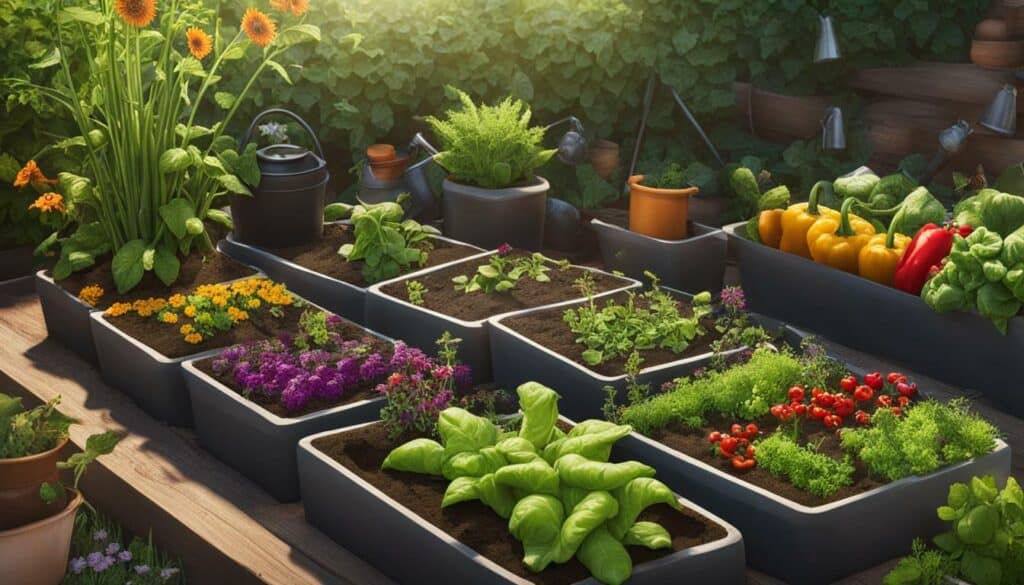
Finding the Perfect Garden Spot
Next, choose a garden spot that receives 6-8 hours of full sun each day and has easy access to water. Finding the perfect location is essential for a successful gardening experience. Keep in mind that not all plants require the same amount of sunlight, so consider what you want to plant before choosing a spot.
Look for areas that are free from obstructions like trees or buildings that may block sunlight. The location should also be easily accessible for watering. If you’re planning a larger garden, consider installing an irrigation system or using a hose with a spray nozzle.
When choosing a spot, also consider the soil quality and drainage. Avoid areas with compacted soil or poor drainage, as this can affect plant growth. You can improve poor soil quality by adding organic matter like compost or using raised beds. In addition, avoid areas where runoff from chemicals like pesticides or fertilizers may flow into your garden.
Finally, consider the aesthetics of the location. Choose a spot that is visible and easily accessible so you can enjoy your garden regularly. Adding decorative elements like garden statues or trellises can also enhance the look and feel of your space.
By following these tips, you can find the perfect garden spot to create a beautiful and thriving garden.
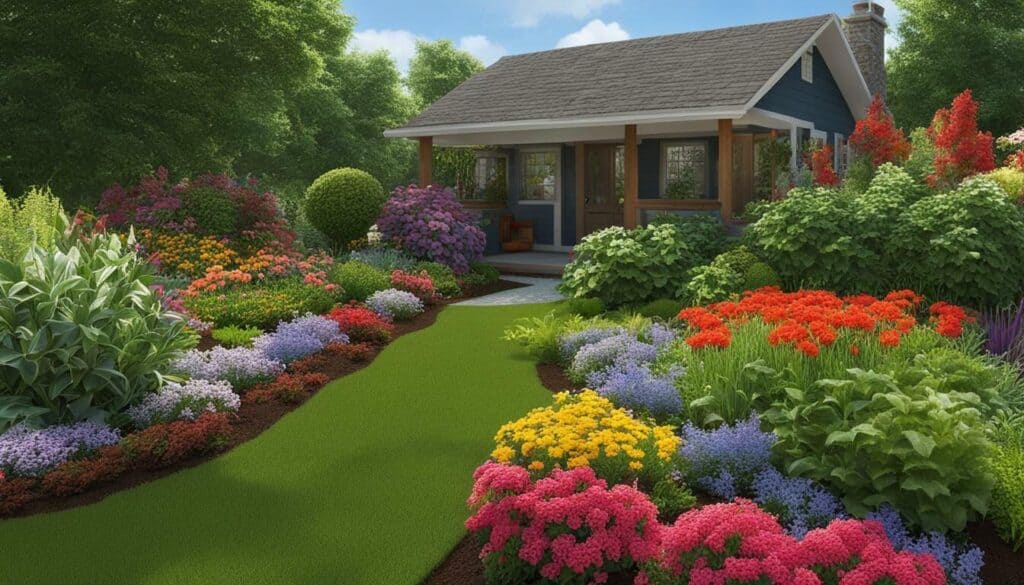
Clearing the Ground
Clear the ground by removing weeds and sod, either by cutting it out or using the lasagna gardening method. Weeds and grass can compete with your plants for nutrients and water, so it’s important to get rid of them before planting. If you prefer to use an organic method, lasagna gardening involves layering newspaper or cardboard, compost, and soil to smother the weeds and create a nutrient-rich environment for your plants.
After clearing the ground, it’s important to test your soil to determine its nutrient levels and pH balance. You can purchase a soil testing kit at your local garden store or send a sample to a lab for analysis. Depending on the results, you may need to amend your soil with organic matter like compost, manure, or peat moss. This will help improve drainage, aeration, and fertility of the soil.
Next, prepare the planting beds by loosening the soil with a rototiller, shovel, or fork. It’s important to break up any large clumps of soil and remove any rocks or debris. This will create a loose and crumbly soil that will allow your plants’ roots to grow deeply and reach the nutrients they need to thrive.
| Tip: | Consider adding a layer of mulch to your planting beds after preparing the soil. This will help retain moisture and suppress weed growth. |
|---|
Once you’ve cleared the ground and prepared the planting beds, you can choose your plants and start planting! Whether you prefer seedlings or seeds, make sure to water them well and follow the instructions on the package or label. Watering is crucial for the plants to establish their roots and start growing, so make sure to water them at the right time and in the right amount.
Clearing the ground may seem like a daunting task, but it’s an important initial step in creating a successful garden. By removing weeds and improving the soil, you’ll create a healthy environment for your plants to grow and thrive. In no time, you’ll be enjoying the fruits of your labor with a bountiful and beautiful garden!
Testing and Improving Your Soil
Test and improve your soil by getting a soil test done and adding organic matter like compost. Before you start your garden, consider what you want to plant, whether it’s vegetables, herbs, or flowers. Choosing the right plants is essential for a successful garden.
The next step is to choose a garden spot that receives 6-8 hours of full sun each day and has easy access to a water source. This will ensure that your plants have all the necessary light and moisture to grow. Clear the ground by getting rid of weeds and sod, and consider using the lasagna gardening method of layering newspaper and compost to create a healthy bed.
Once you have cleared the ground, it’s time to test your soil. Soil testing will tell you what nutrients your soil is lacking and what you need to add to improve it. You can purchase a soil testing kit at your local garden center, or you can send a sample of your soil to a lab for analysis.
After you’ve determined any deficiencies, it’s time to add organic matter to improve the soil. Organic matter like compost, manure, or leaf mold can help improve the texture and fertility of your soil. Mix the organic matter into the soil, and prepare your planting beds by loosening the soil and mixing in organic matter.
Now that your soil is ready, it’s time to choose plants that are adapted to your climate, soil, and sunlight. This will ensure that your plants thrive and produce a bountiful harvest. You can start planting either by sowing seeds directly in the garden or by transplanting young plants.
Finally, water your plants at the right time to ensure their health and growth. Watering in the morning or evening is best, and be sure to water deeply to encourage deep root growth. With these simple gardening hacks for beginners, you’ll have a thriving garden in no time.
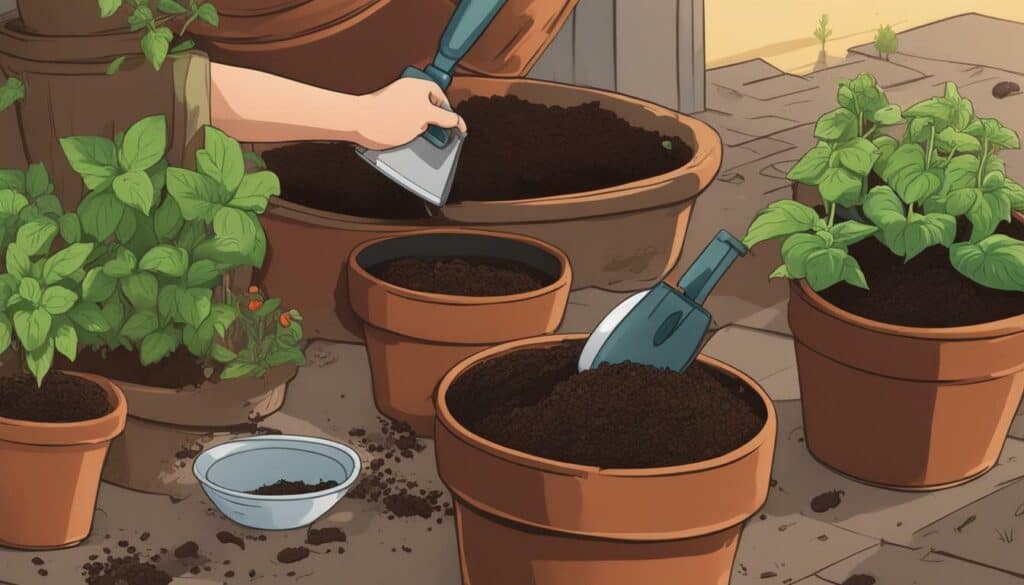
Preparing Your Planting Beds
Preparing your planting beds is an essential step in creating a thriving garden. To start, consider what you want to plant – vegetables, herbs, or flowers – and choose plants that are suited to your specific type of garden.
Next, find the perfect spot in your yard that receives ample sunlight and has easy access to a water source. A location that gets at least 6 hours of sunlight per day is ideal for most plants, while also being in a convenient location for easy watering.
Clearing the ground by removing weeds and sod is the next step. You can either cut them out with a sharp blade or opt for the lasagna gardening method. With the latter, you layer organic matter and soil on top of the grass, smothering the vegetation and creating a rich base for growing plants.
Testing and improving your soil is crucial to ensuring your plants have the right nutrients to thrive. Have a soil test done by your local extension office or use a DIY soil test kit to determine the quality of your soil. Based on the results, you can add organic matter like compost to improve the soil’s texture and nutrient content.
Now it’s time to prepare your planting beds. Loosen the soil with a rototiller or dig by hand to create a soft, crumbly texture. Mix in the organic matter, which will help promote healthy plant growth.
Finally, select the plants you want to grow and water them at the right time to ensure their success. Starting from seeds or buying young plants are both viable options for beginners. Follow the watering guidelines specific to the plants you choose to help them grow strong and healthy.
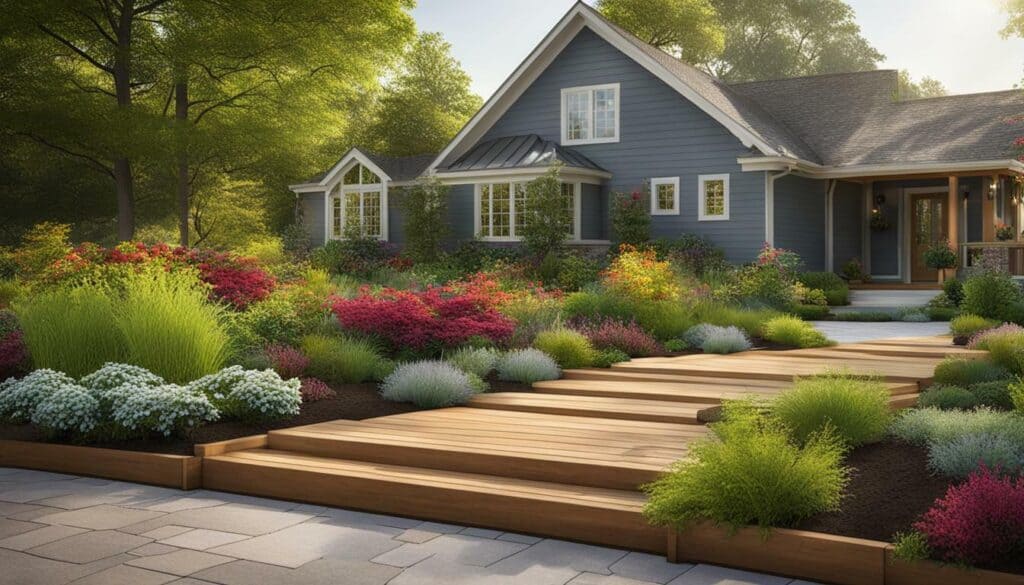
Picking the Right Plants
Then, pick your plants that are adapted to your climate, soil, and sunlight. Choosing the right plants is essential to ensure a flourishing garden. As a beginner, it’s crucial to select low-maintenance plants that are easy to care for and well-suited to your garden conditions.
Consider the type of garden you want to create – whether it’s a vegetable garden, herb garden, or flower garden. Plan out a color palette that complements the overall garden design. Jewel-toned plants like amethyst flowers, sapphire-toned succulents, or emerald foliage can create a relaxing vibe in your garden.
Another factor to consider is the maintenance level of the plants you want to add to your garden. If you are a busy person, it’s better to opt for plants that require minimal upkeep. Trees can add height and appeal to your garden, but be mindful of their eventual size and spread.
If you want to create a low-maintenance garden that also looks chic, consider adding gravel to your garden design. Gravel gardens are an easy way to achieve a sleek and modern look without having to spend much time on maintenance.
Upgrading your outdoor furniture with new paint or decor can also refresh the look of your garden. Seasonal displays, upgraded lighting, and stepping stone garden paths can further enhance the overall garden design.
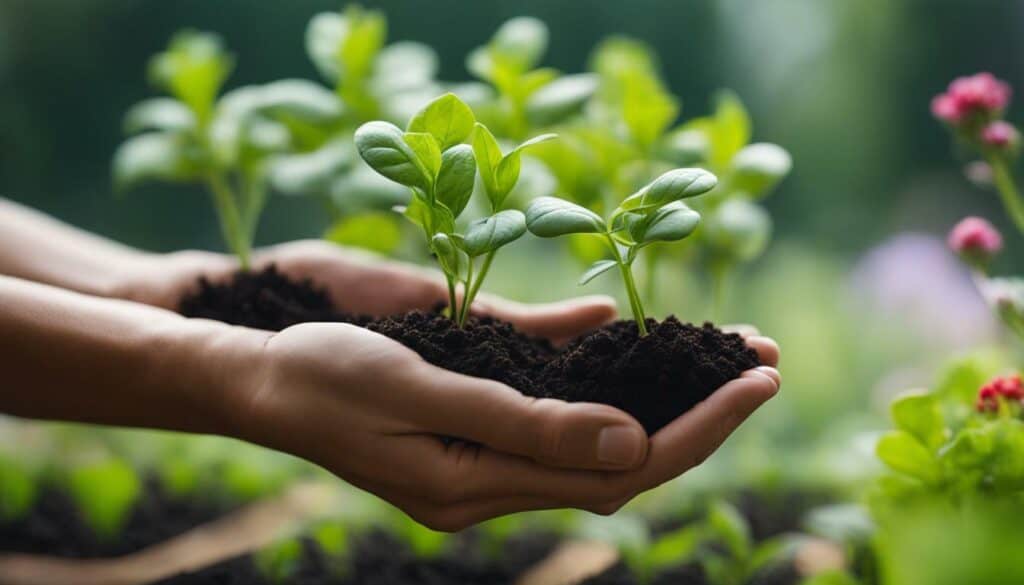
Before starting your garden project, it’s important to consider the plants you want to add, the location of the garden, and to clear the ground and prepare the soil accordingly. By following these beginner-friendly garden ideas, you can create a beautiful and thriving garden even if you are a first-timer.
Start Planting
Start planting either from seeds or by buying young plants. Deciding what to plant is the first step in creating a beautiful and thriving garden. Choose plants that are adapted to your climate and soil, and consider your preferences and needs. Whether you want to grow vegetables, herbs, or flowers, there are many options for beginners.
Assessing the amount of sunlight your garden receives is crucial, as most plants require 6-8 hours of full sun. Ensure your garden spot has easy access to water as well. Once you have chosen your plants, it’s time to clear the ground by removing weeds and sod. This step is necessary for a healthy garden, and there are different methods you can use, such as cutting or the lasagna gardening method.
Testing and improving the soil is essential to ensure optimal plant growth. You can test your soil using a testing kit or by sending a sample to a lab. Adding organic matter, like compost, can improve soil quality. Preparing your planting beds by loosening the soil with a rototiller or by hand is the next step. Adding organic matter to your planting beds will help create a conducive environment for your plants to thrive.
Once your planting beds are ready, it’s time to pick the plants that suit your climate, soil, and sunlight conditions. Annuals such as zinnias and marigolds, perennials like daylilies and Russian sage, and vegetables such as tomatoes and peppers are great choices for beginners. You can start planting either by sowing seeds directly in the garden or by buying young plants to transplant.
Watering your plants at the right time is crucial for their growth and development. You should also provide basic care, such as fertilizing and pruning, based on the specific needs of your plants. Starting a garden is an exciting and rewarding endeavor for both beginners and seasoned gardeners. With these guidelines, you can create a beautiful and productive garden.
Watering and Basic Care
Watering and basic care are essential aspects of gardening. As a beginner, there are several steps you can take to ensure a successful garden. First, consider what you want to plant in your garden. Decide if you want to grow vegetables, herbs, or flowers, and choose plants that will thrive in your specific garden conditions. It is important to assess the amount of sunlight your garden receives each day and select plants accordingly.
Once you have chosen your plants, it is crucial to prepare the soil. Remove any weeds or sod from the area where you plan to plant, and consider getting a soil test done to understand its nutrient levels. Adding organic matter, such as compost, to the soil can improve its quality and provide essential nutrients to your plants.
Next, prepare your planting beds by loosening the soil. Either use a mechanical device like a rototiller or dig by hand, making sure the soil is moist enough for easy digging. Mixing in organic matter during this step can further improve the quality of the soil.
Now it’s time to pick your plants and start planting. Choose plants that are suitable for your climate, soil type, and sunlight levels. You can start seeds indoors or directly sow them in the garden, following the instructions on the seed packets. Alternatively, you can buy young plants from a garden center and transplant them into your garden. Make sure to water the plants thoroughly after planting.
Finally, water your plants at the right time and follow basic care guidelines to ensure their success. Proper watering is crucial for the health of your garden. Water your plants at the right time, usually in the morning or evening, to minimize water loss due to evaporation. It is important to provide enough water to keep the soil moist, but be careful not to overwater as it can lead to root rot and other problems. Regularly check the moisture levels of the soil and adjust your watering schedule accordingly.
By following these watering and basic care practices, you can have a thriving and beautiful garden. Remember to also provide regular maintenance such as weeding, mulching, and fertilizing to keep your plants healthy and vibrant.
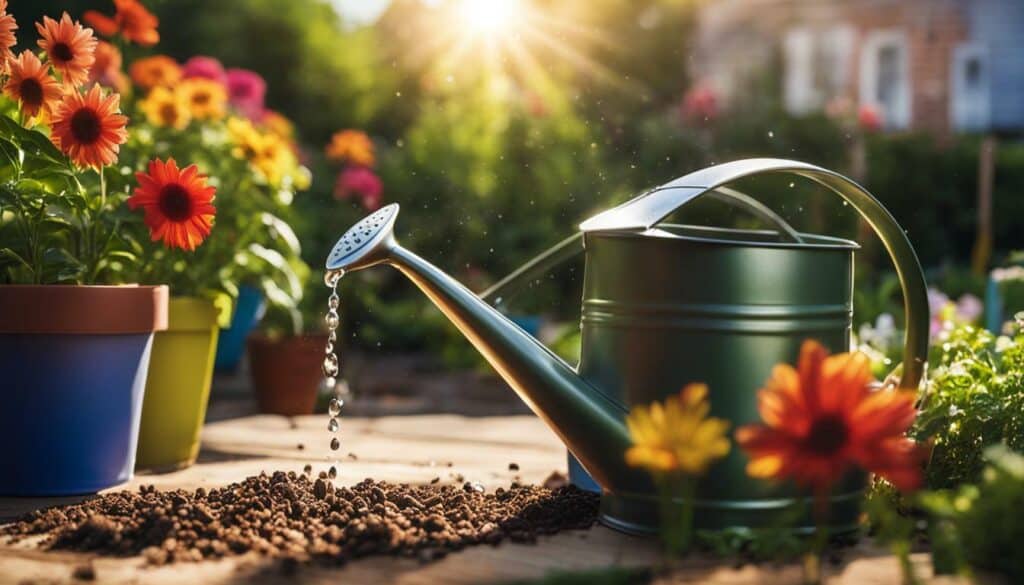
Enjoying Your Garden
Sit back, relax, and enjoy the fruits of your gardening labor! Once you’ve followed the steps to start your garden from scratch, it’s time to add some personal touches to make it your own. Here are some ideas for easy and beginner-friendly garden projects.
Choose Jewel-Toned Plants
One easy way to add vibrancy to your garden is by choosing jewel-toned plants. Colors like rich purples, deep blues, and bright pinks can create a relaxing atmosphere and add visual interest to your outdoor space.
Add Trees
Adding trees can create a canopy and provide shade, but make sure to choose smaller trees that won’t dominate your garden. Trees like dogwood and redbud have smaller canopies and add beautiful spring color.
Use Gravel
Using gravel to create a beautiful and chic garden space is another low-maintenance idea. Gravel can be used for paths, as a ground cover, or as a decorative element in your garden.
Upgrade Your Furniture
Upgrading your furniture with a fresh coat of paint can also give your garden a new look. Consider using bright colors or pastels to create a playful atmosphere.
Create Seasonal Displays
Creating seasonal displays with pots of flowers can add color and interest to your garden. Change them up with the seasons for a fresh look.
Add Lighting
Lighting is essential for creating a cozy atmosphere in the garden. Consider adding layers of light with wall lights and pendant lights, or use decorative lighting like LED candles and lanterns.
Add a Path
Creating a path with stepping stones can add visual appeal to your garden. Use natural stones or colorful tiles to create a unique look.
By trying out these easy garden ideas, you can create a beautiful and personalized outdoor space that you can enjoy for years to come.
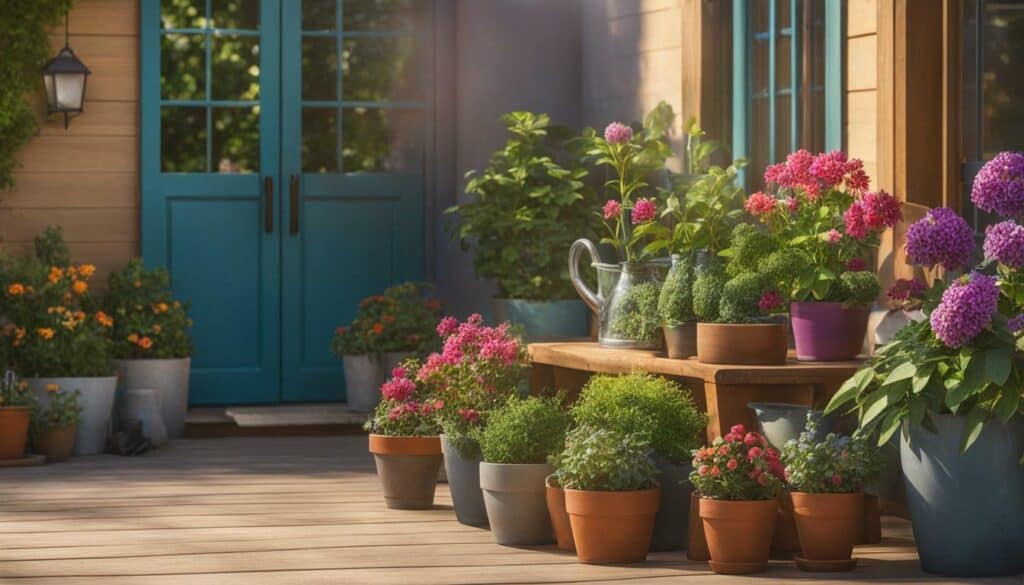
Conclusion
With these easy garden ideas for beginners, you can turn your green space into a sanctuary, no green thumb necessary. Starting a garden can be a rewarding and fulfilling experience that allows you to reap the rewards of your hard work. By considering your preferences and maintenance requirements, you can choose the right plants for your space. Remember to select an ideal spot with ample sunlight and access to water, clear the ground of any unwanted weeds or sod, and improve the soil quality with organic matter. Preparing the planting beds by loosening the soil and incorporating organic matter is crucial for root growth.
Choosing the right plants for your climate, soil, and sunlight is essential. Starting from seeds or buying young plants are both viable options for gardeners. And, don’t forget, watering at the right time is crucial for the success of your garden.
By following these steps and tips, you can embark on a successful gardening journey. Not only will you enjoy the fruits of your labor, but you’ll also benefit from the satisfaction of nurturing something from start to finish. So, what are you waiting for? Start your journey today with these easy gardening tips for starters and begin enjoying your new green space in no time.
FAQ
Q: Is starting a garden overwhelming for beginners?
A: Starting a garden can be overwhelming for beginners, but there are easy and manageable steps to get started.
Q: What should I consider when deciding what to plant?
A: Consider what you want to plant, whether it’s vegetables, herbs, or flowers.
Q: How do I find the perfect garden spot?
A: Choose a garden spot that receives 6-8 hours of full sun each day and has easy access to water.
Q: How do I clear the ground for my garden?
A: Clear the ground by removing weeds and sod, either by cutting it out or using the lasagna gardening method.
Q: How can I test and improve my soil?
A: Get a soil test done to assess its quality and add organic matter like compost to improve it.
Q: How do I prepare my planting beds?
A: Prepare your planting beds by loosening the soil with a rototiller or by hand.
Q: How do I pick the right plants for my garden?
A: Select plants that are adapted to your climate, soil, and sunlight.
Q: How do I start planting?
A: Start planting either from seeds or by buying young plants.
Q: How do I water and care for my plants?
A: Water your plants at the right time and follow basic care guidelines to ensure their success.
Q: How can I enjoy my garden?
A: Enjoy your garden and the rewards of your efforts.
Can I Use the Easy Gardening Ideas for Beginners Guide to Start My Garden?
Looking to start your own garden? Look no further than the easy gardening ideas for beginners guide. This comprehensive resource is designed to simplify the process and provide helpful tips and tricks for new gardeners. With step-by-step instructions and practical advice, you’ll be well-equipped to create a thriving green space and enjoy the joys of gardening.
Source Links
- https://www.bhg.com/gardening/yard/garden-care/ten-steps-to-beginning-a-garden/
- https://www.idealhome.co.uk/garden/garden-ideas/easy-garden-ideas-202397
- https://www.houzz.com/magazine/10-tips-to-start-a-garden-can-do-ideas-for-beginners-stsetivw-vs~11308212
- https://www.housebeautiful.com/uk/garden/a32173671/gardening-for-beginners/
- https://www.architecturaldigest.com/story/vegetable-garden-ideas
- https://shiftingroots.com/10-easy-vegetables/
- https://www.almanac.com/vegetable-gardening-for-beginners
- https://www.countryliving.com/gardening/garden-ideas/g43413616/vegetable-garden-for-beginners/
- https://originalhomesteading.com/how-to-find-the-perfect-garden-spot/
- https://growinginthegarden.com/gardening-for-beginners-how-to-start-a-garden-in-8-simple-steps/
- https://www.housebeautiful.com/uk/garden/designs/g28/garden-ideas-on-a-budget/
- https://www.almanac.com/soil-preparation-how-do-you-prepare-garden-soil-planting
- https://journeywithjill.net/gardening/2018/10/23/garden-soil-testing-a-beginners-guide/
- https://www.creativevegetablegardener.com/prepping-spring-garden-beds/
- https://getbusygardening.com/prepare-vegetable-garden-for-planting/
- https://www.realhomes.com/advice/how-to-choose-plants-for-your-garden
- https://www.gardeningetc.com/advice/best-plants-for-beginners
- https://www.homesandgardens.com/gardens/best-plants-for-beginners
- https://www.goodhousekeeping.com/home/gardening/advice/g495/small-garden-ideas/
- https://getbusygardening.com/beginners-guide-to-gardening-on-a-budget/
- https://www.thespruce.com/diy-garden-ideas-7187536

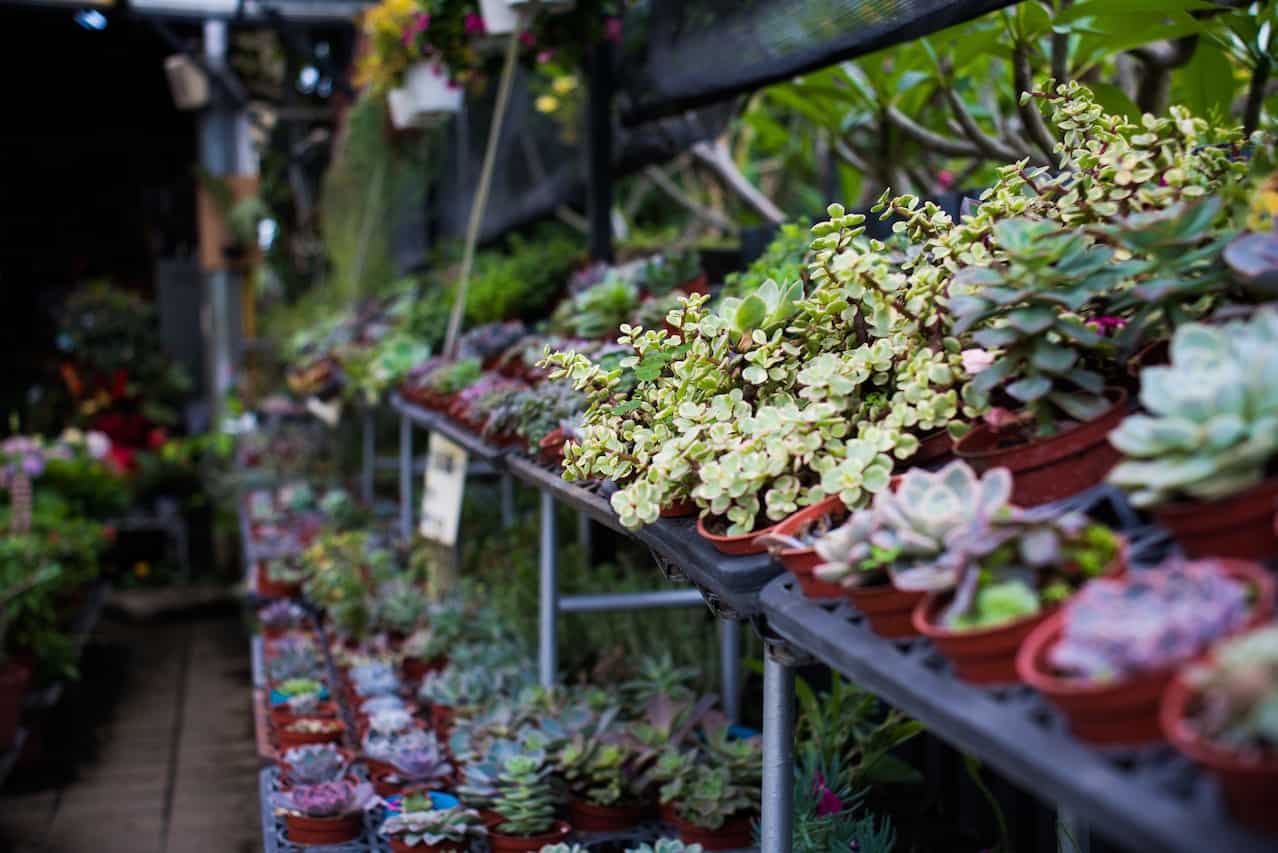



Leave a Reply